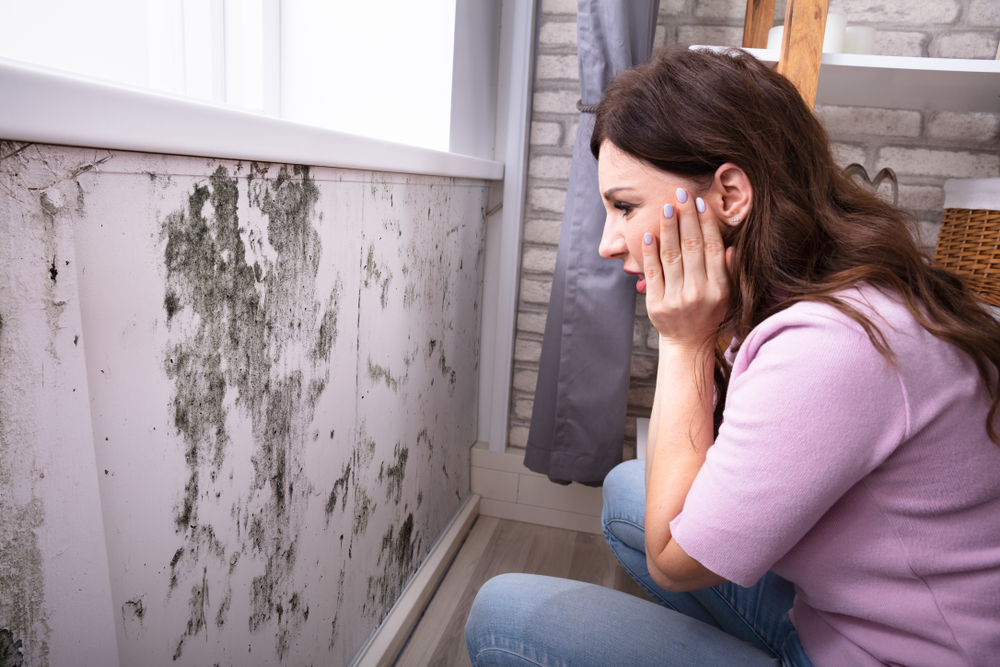Mold, a common fungus, grows best in warm, damp places. This means that a leaky pipe or a backed-up drain could provide cause mold after water damage. Homeowners should take some precautions to prevent mold from taking hold – saving their home and their health from the long list of ailments associated with mold exposure.
Mold spores are everywhere–indoors and out. So, if water damage provides an opportunity for growth, you will likely have a problem on your hands quickly. Here are a few steps you can take:
How to Check for Mold After Water Damage
Sometimes moisture problems are acute, like a flood that fills your home with a foot of water. And sometimes moisture problems are a little less noticeable, like a small drip from a sink pipe. Either way, once you discover water leaks or excess water, it’s time to act fast.
Check the affected area thoroughly for signs of discoloration or musty odors–both are telltale signs of mold growth. If you see a dark spot and you’re unsure, try cleaning the area with a diluted bleach solution. If the spot quickly comes back, it’s safe to assume you have a mold problem.
Why is Mold a Problem?
The presence of mold in our environment can cause some serious health risks. There are many different types of mold; some simply produce chronic allergy symptoms like a runny nose and itchy eyes that just won’t go away. But some types are more serious. Toxic mold can make you and your family gravely ill.
Black mold is a toxic mold that proliferates on products with a high cellulose content like fiberboard, gypsum board, and wallpaper–all commonly found in your home. This particular type of mold can even lead to death, especially in infants and young children.
Tips for Cleaning Mold After Water Damage
The first step is to stop the source of the water. If your home is filled with floodwater, you may need some help getting the last bit of moisture out. This includes removing soaked materials like carpets that cannot be properly dried out.
After removing the water and drying everything out, you can move on to cleaning and sanitizing hard surfaces. Keep these tips in mind:
● Keep the humidity below 50% using a dehumidifier and/or air conditioner.
● Use a dry vacuum with a HEPA filter to remove and contain mold spores.
● Stick with a properly diluted bleach solution for sanitation.
● Wear appropriate personal protective equipment to mitigate mold exposure and chemical exposure during clean-up.
How to Prevent Mold After Water Damage
If you notice water damage in your home, a quick response is your best line of defense in preventing mold growth. You want to rid the area of moisture and mold spores to stop mold growth before it gets out of hand.
Follow these steps:
1. Stop the leak
2. Remove the moisture
3. Dry the affected area completely
4. Sanitize hard surfaces with a bleach solution
A leaky pipe doesn’t necessarily mean that you’ll have a full-blown mold infestation or that you’ll be vacating your home while you spend thousands on mitigation efforts. If you find and address the leak quickly, you may even be able to salvage the area before any lasting damage is done. If you’re wondering how to prevent water damage after a leak, the key is to quickly and effectively dry the area out–completely. Most water damage occurs because we don’t get all of the moisture out before moving on.
Final Thoughts on Mold After Water Damage
Mold growth is common after any type of water damage. The fact is that we keep our homes at a balmy 68 – 72 degrees Fahrenheit for our comfort, providing the perfect opportunity for mold spores to proliferate once they’re introduced to a little moisture. Mold is also generally harmful to our health, so extra caution should be taken to stop mold growth after water damage, saving you and your home from mold exposure. For help with serious mold problems, call J&R Restoration today.


